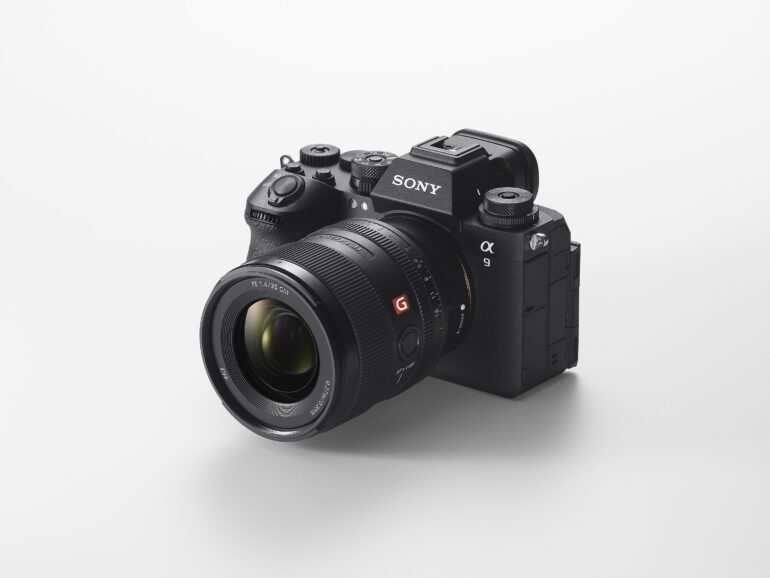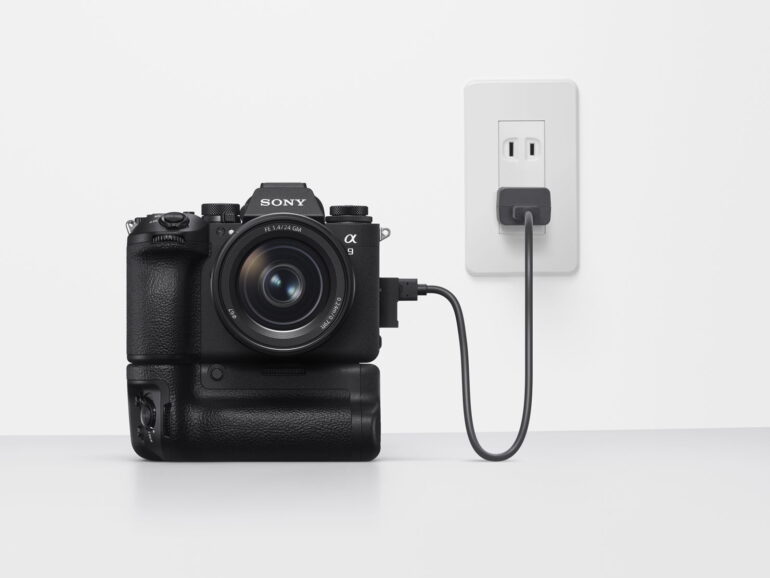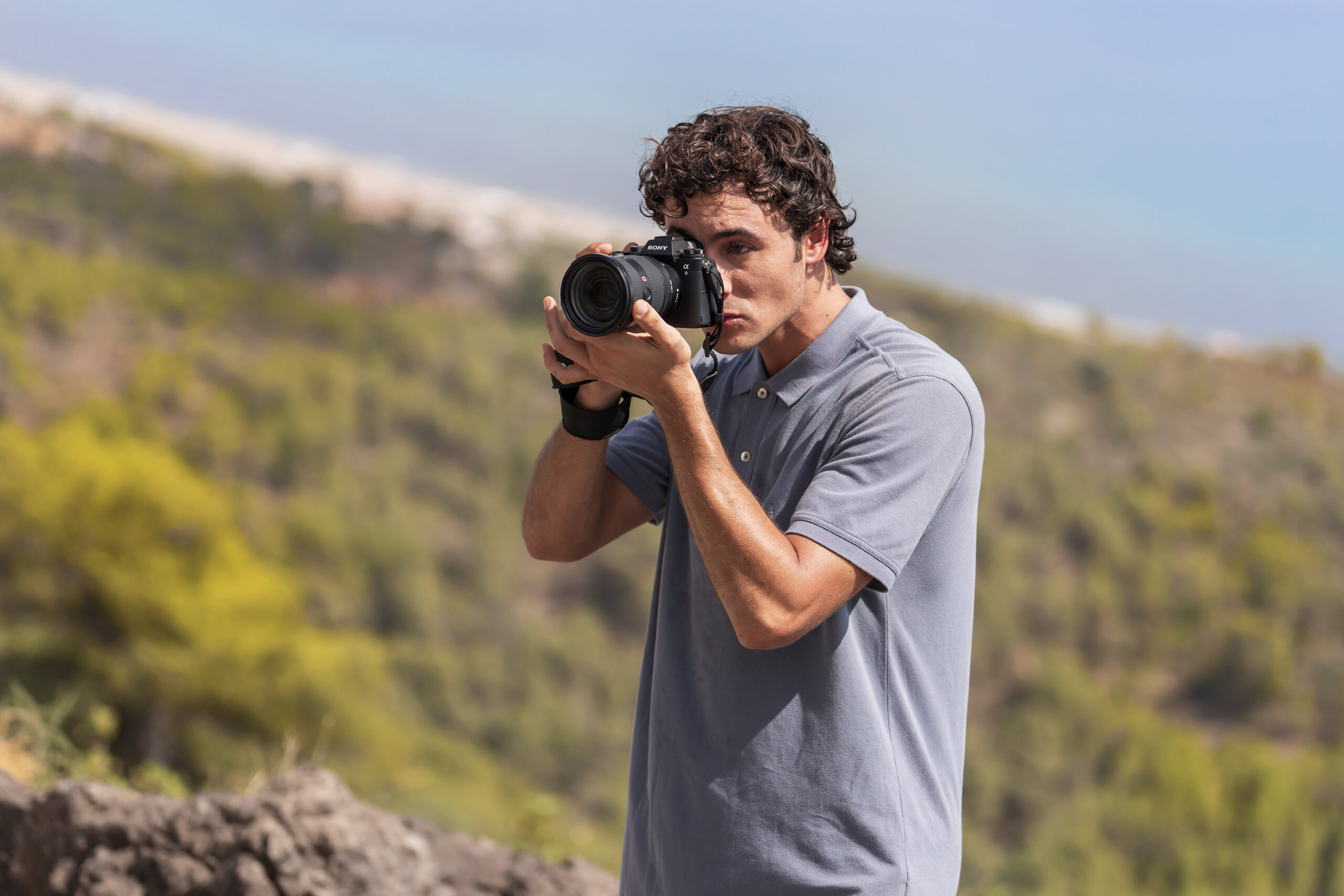The Sony a9 series is innovative — but it’s also overkill if you don’t photograph sports or wildlife. That’s changing with the Sony a9 III, however, because of a feature called a global shutter. A first for full-frame cameras, the global shutter inside the Sony a9 II solves a few issues that plague photographers beyond just capturing fast action. While the fast burst speeds of the a9 series typically draw action photographers, the global shutter on the a9 III is a feature that will also come in handy even when shooting portraits and events.
Sony announced the a9 III alongside the 300mm f2.8 GM OSS lens. The global shutter isn’t the only update — you can read about features like the 120 fps burst with autofocus here. But, the global shutter will make the new camera body appeal to photographers that don’t even want 120 fps. This is why.
What is a global shutter?
Electronic shutters have been around for several years, designed for silent shooting and faster burst speeds. Yet, the mechanical shutter has long been favored because it doesn’t come with the many issues that plague a traditional rolling electronic shutter. A rolling electronic shutter exposes one row of pixels at a time. While this happens very quickly, it still introduces some distortion due to the lag between exposing the top of the image and the bottom.
A global shutter, in contrast, is an electronic shutter that exposes every pixel at once. While global shutters have been around for a few years in industrial cameras, the Sony a9 III is the first to bring the feature to a professional mirrorless body. Global shutters have stayed out of consumer cameras until now because of the massive amounts of data required to expose each pixel at once. The processors just couldn’t handle that amount of data, not without sacrificing burst speeds. To not only put one in a consumer camera but to do so with a 120 fps burst speed is an impressive feat.
The global shutter solves a type of distortion called a rolling shutter. Because the image is exposed one row of pixels at a time, the fastest moving subjects will appear to bend due to the delay in exposing the full image. This means that the front of a train may appear to bend or a golf club can appear to curve. That prevented many photographers from switching to an electronic shutter, despite the speed advantages.

With a global shutter, the Sony a9 III shouldn’t suffer from any rolling distortion. But, while rolling distortion is the most commonly understood issue of a traditional electronic shutter, the Sony a9 III fixes a few other limitations of modern cameras. And these fixes? The features are big enough that the Sony a9 III will draw attention from more than just the sports and wildlife photographers who crave the camera’s 120 fps burst speeds.
Global shutters also correct banding

When working with a rolling electronic shutter under artificial lighting, photographers will often notice weird lines running across the image. This phenomenon is called banding, and it is caused by the flicker in many types of artificial light sources.
Artificial lights like fluorescent have a subtle flicker to them. This flicker is too fast for the human eye to pick up on. But we’re talking about camera shutter speeds faster than a blink. A camera will often pick up on the flicker. This is also why, if you photograph Christmas lights with a fast shutter speed, in some images, the lights will actually look like they are turned off.
The trouble is, when the image is exposed one row of pixels at a time, that flicker reduces the available light during part of the exposure. The pixels exposed during the flicker are darker than the rest. The result? Dark-colored lines running through the image.
In many genres, photographers can just switch to using the traditional mechanical shutter to avoid banding. But one of the advantages of an electronic shutter is that it’s silent. If you want to blend in the background of a wedding ceremony, you want your camera to operate as quietly as possible. Lines running through the images, however, typically leave many wedding photographers—including myself—sticking to the louder mechanical shutter. The global shutter on the Sony a9 III will allow photographers to photograph silently under artificial lighting without banding.
The Sony a9 III can sync with a flash at any shutter speed
While mechanical shutters don’t have the banding or rolling issues of an electronic shutter, physical shutters present limitations when working with flash. Imagine the focal plane shutter on most mirrorless cameras as two curtains — the first one opens to start the exposure, the second one closes to finish the exposure. But, once the camera reaches a specific shutter speed, the sensor is never fully open before the second curtain starts coming up. When the flash fires at shutter speeds above the flash sync speed, it creates black bands on the image that are actually the shutter closing prematurely.
By enabling flash at any speed, the Sony a9 III can shoot with fast shutter speeds without reducing the power, recycling rate, or battery life of the flash.
Photographers are able to get around the limitations of flash sync speed by using a high-speed sync flash. Instead of one pulse of light, HSS sends out multiple bursts rather than just one. Those multiple bursts allow flash to be used at fast shutter speeds without banding.
HSS is used by more than just sports photographers too. When shooting portraits with a wide-open aperture outdoors, a 1/250 shutter speed will typically be overexposed. There’s just too much light in the scene to drop the shutter that low and still get the bokeh of an f1.8. The only options are to use HSS flash, or add a neutral density filter to cut the amount of light coming into the lens. ND filters also have their own list of problems, including color casts and even affecting the accuracy of the autofocus.
The Sony a9 III can shoot with a traditional flash—not HSS—at any shutter speed, even 1/80,000. Why is that a big deal? HSS has a few limitations. When you send out multiple pulses of light rather than just one, the light isn’t as strong. The light also won’t be ready to fire another flash right away. The battery on the flash also dies faster.
By enabling flash at any speed, the Sony a9 III can shoot with fast shutter speeds without reducing the power, recycling rate, or battery life of the flash. Getting more power from a flash means more flexibility to add drama or avoid an overexposed sky.
This is a huge feature for shooting portraits. As a portrait photographer, I love using flash to add catchlights and prevent the sky from overexposure. But my flash tires quickly, and can’t keep up with my shooting speed. Getting more power and a faster refresh rate while still being able to shoot wide-open apertures could be a game-changer.
Is there a downside to a global shutter?

Sony is so confident in the abilities of the Sony a9 III global shutter that it’s the only shutter in the camera — there is no physical mechanical shutter. Without the banding and distortion typical of an electronic shutter, the missing mechanical shutter probably won’t be a big issue. But, that doesn’t mean the global shutter doesn’t have a downside.
The reason that global shutters have not arrived in consumer cameras before now is that the design requires processing a lot of data very quickly. The Sony a9 III uses a processor that’s up to 8x faster than previous versions. That negates one of the downsides to a global sensor—slower speeds—because the a9 III is even faster than its predecessor.
The global sensor and faster processor doesn’t appear to negatively impact speed. But it does impact the battery life. The Sony a9 III has a 400-shot battery life with the viewfinder, or 530 with the LCD. That’s a drop of 100 shots from the Sony a9 II, which offers a 500-shot battery life, or 690 shots with the LCD.
The other downside to the global sensor is cost. Right now, the Sony a9 II is going for about $4.5K. Once the Sony a9 III starts shipping next spring, it’s slated for a list price of $6K.
I’ve seen some great portraits taken with the a9 and a9 II. But, the $4.5K price point is a bit overkill when a lot of its best features — like 20 fps — aren’t necessary for genres like portraits and weddings. The ability to shoot silently in a wedding chapel without banding and the ability to shoot outdoor portraits without the limitation of HSS, however, change that. I don’t think every portrait and wedding photographer needs to immediately pre-order the Sony a9 III, especially with the higher price point. But, the global sensor design is going to draw more than just sports and wildlife photographers.


